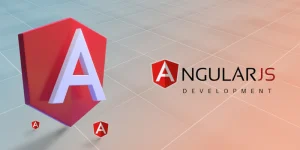
In cloud computing, Amazon Web Services (AWS) stands out as a leader, offering a vast array of network services to meet the diverse needs of businesses and developers. AWS’s networking infrastructure is central to its functionality, enabling seamless communication between various resources and services within the cloud environment. Exploring the Power of AWS Networking is essential for optimizing performance, enhancing security, and architecting robust cloud solutions. Unlock your AWS potential! Embark on a AWS journey with our AWS Classes in Chennai. Join now for hands-on learning and expert guidance at FITA Academy.
AWS Networking Fundamentals
Virtual Private Cloud (VPC)
The Virtual Private Cloud (VPC) is the foundation of AWS networking, allowing customers to build a logically isolated segment of the AWS cloud. Users in a VPC can specify their IP address range, establish routing tables, and manage network access using security groups and network access control lists (ACLs). VPCs lay the groundwork for deploying AWS resources like EC2 instances, RDS databases, and Lambda functions in a safe and scalable way.
Subnets and Availability Zones
Subnets are subdivisions of a VPC that allow for further segmentation of resources. By distributing resources across multiple subnets within different availability zones (AZs), users can achieve high availability and fault tolerance. Availability zones are physically separate data centers within a region, providing redundancy and resilience against failures.
Internet Gateway and NAT Gateway
To enable communication between resources within a VPC and the internet, users can attach an internet gateway to their VPC. An internet gateway serves as a gateway for internet traffic, allowing instances with public IP addresses to connect to the internet access and receive inbound traffic. Additionally, for instances that require outbound internet access but do not have public IP addresses, users can deploy a Network Address Translation (NAT) gateway. Learn all the AWS techniques and become an AWS developer. Enroll in our AWS Online Course.
Advanced Networking Features
Elastic Load Balancing (ELB)
Elastic Load Balancing distributes incoming application traffic over many destinations, such as EC2 instances, containers, and IP addresses, to maximize resource usage, fault tolerance, and scalability. With support for multiple load balancer types, including Application Load Balancers, Network Load Balancers, and Classic Load Balancers, ELB enables users to build highly available and resilient architectures.
Virtual Private Network (VPN) and Direct Connect
AWS provides options for securely connecting on-premises networks to VPCs using Virtual Private Network (VPN) connections or AWS Direct Connect. VPN connections utilize encrypted tunnels over the internet, while Direct Connect establishes dedicated network connections between on-premises data centers and AWS regions, offering higher throughput and lower latency.
AWS Transit Gateway
AWS Transit Gateway simplifies network connectivity by acting as a central hub network for routing traffic between VPCs, on-premises networks, and AWS services. With support for hub-and-spoke and full mesh architectures, Transit Gateway streamlines network management and reduces operational overhead, particularly in large-scale deployments with multiple VPCs and connectivity requirements.
AWS networking is a fundamental aspect of building scalable, reliable, and secure cloud architectures. By mastering the foundational concepts of VPCs, subnets, and connectivity options, users can design robust network infrastructures that meet their specific requirements. Whether deploying simple web applications or complex enterprise workloads, a solid understanding of AWS networking principles is essential for unlocking the full potential of the AWS cloud. Explore the top-notch Best Training Institute In Chennai. Unlock coding excellence with expert guidance and hands-on learning experiences.
Read more: AWS Interview Questions and Answers

